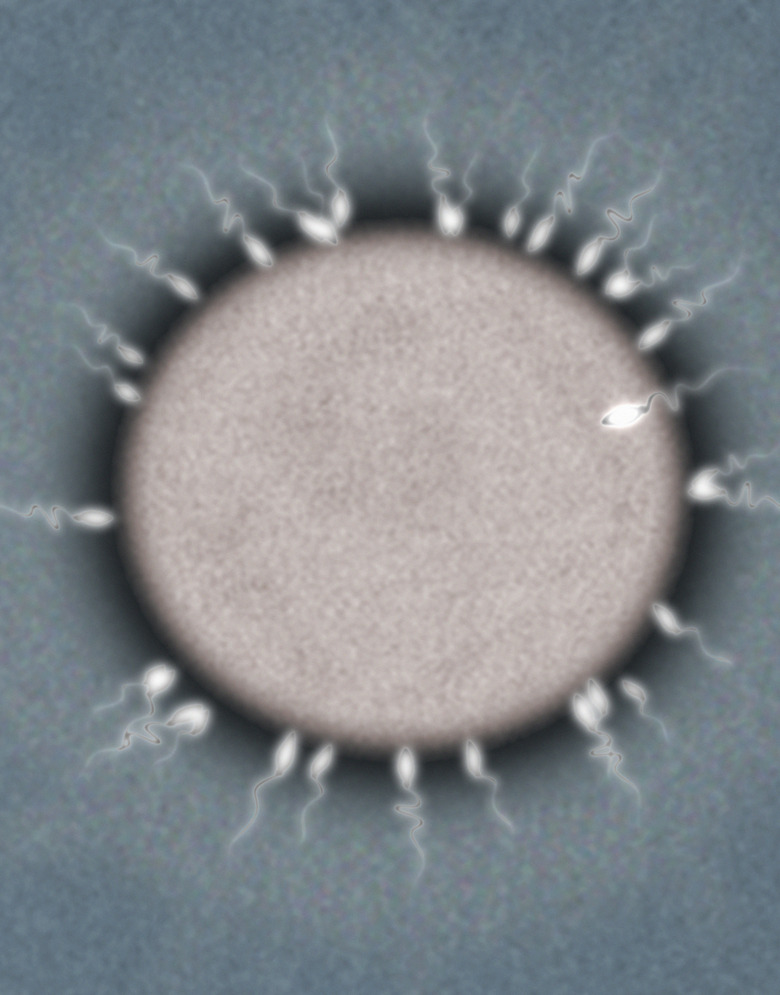What Happens At The Chromosomal Level As A Result Of Fertilization?
One of the features that define eukaryotes is sexual reproduction. Of course, this entails more than just an egg meets sperm and lives happily ever after.
Sexual reproduction relies on complex cell programs that make fertilization possible. The result is unique offspring, which may enhance their survival.
Meiosis and Fertilization
Meiosis
and Fertilization
The first step of sexual reproduction happens long before fertilization. The organism must use **meiosis,** sometimes called reduction division, to produce gametes. These are the sex cells you know as sperm and eggs.
Since sexual reproduction occurs when two gametes come together and combine their genetic information, sex cells must be **haploid**. This means they each bring only half the necessary chromosomes to the fertilization party.
Haploidy ensures that the fertilization event produces a diploid zygote or a proto-human with a full set of chromosomes, half contributed by the egg cell and half contributed by the sperm cell.
During meiosis, the diploid parent germ cell makes copies of its chromosomes (which contain all the genes that code for the traits that make you you) and then splits these between four haploid daughter cells. These daughter cells are the gametes.
Chromosomal Abnormalities
Chromosomal
Abnormalities
The reduction division of meiosis is important because it makes the math associated with fertilization work. It also ensures genetic diversity among the offspring, which is the major benefit of sexual reproduction.
In the midst of all the reducing and dividing, the cell undergoing meiosis also shuffles the genetic information in the chromosomes to make sure each daughter cell is unique from the parent cell and the other daughter cells.
The cell uses three mechanisms to shuffle the genetic deck:
- **Crossing over**, wherein the chromosomes exchange small portions of DNA
- Random segregation, which makes sure the two versions of each gene wind up in separate
gametes
- Independent assortment, which ensures the duplicated chromosomes split off into different
gametes
If meiosis does not function the way it should, the sex cells might wind up with the wrong chromosome number during fertilization. This can produce a zygote incapable of developing or offspring with **chromosomal abnormalities**.
Meiosis and Fertilization, Redux
Meiosis
and Fertilization, Redux
When you describe the process of fertilization, you might start at the time the sperm start traveling toward the egg, but it actually begins much earlier. Most male humans begin producing sperm cells at puberty, with the germ cells completing meiosis from start to finish at that time.
Most female humans are born with all the egg cells they will ever need already inside their ovaries. These egg cells began meiosis shortly after that person was conceived and then froze at the phase of meiosis called metaphase 2.
Sperm cells don't show up to sexual reproduction completely ready to perform their role in fertilization. As soon as the sperm cells enter the reproductive tract, they undergo capacitation by ions they encounter there. This five to six hour process changes the structure of the sperm cells and enhances their ability to swim.
Egg, Meet Sperm
Egg,
Meet Sperm
Then, the sperm cells and egg cell travel toward each other. The egg cell has an outer coat called the zona pellucida, to which a sperm cell must bind for fertilization to occur. This binding triggers three events:
- The acrosome reaction, where the membranes of the egg cell and sperm cell fuse, and the contents
of the sperm cell flow into the egg cell
- The cortical reaction, which involves changes in the egg that prevent any other sperm cells from binding with the egg cell
- The egg
cell (finally!) finishes meiosis
Congratulations, It’s a Zygote
Congratulations,
It's a Zygote
Once the haploid contents of the egg cell and sperm cell come together through fertilization, you have a diploid zygote. The sperm cell contributes more than just chromosomes to the zygote. It also donates a **centriole**. This organelle does the organizational work so that the single-celled zygote can begin to divide via mitosis.
This mitotic cell division happens rapidly as the zygote travels toward the uterus, where it will implant. After about two weeks of dividing, the zygote is officially an embryo.
Cite This Article
MLA
Mayer, Melissa. "What Happens At The Chromosomal Level As A Result Of Fertilization?" sciencing.com, https://www.sciencing.com/happens-chromosomal-level-result-fertilization-18707/. 29 April 2019.
APA
Mayer, Melissa. (2019, April 29). What Happens At The Chromosomal Level As A Result Of Fertilization?. sciencing.com. Retrieved from https://www.sciencing.com/happens-chromosomal-level-result-fertilization-18707/
Chicago
Mayer, Melissa. What Happens At The Chromosomal Level As A Result Of Fertilization? last modified August 30, 2022. https://www.sciencing.com/happens-chromosomal-level-result-fertilization-18707/
